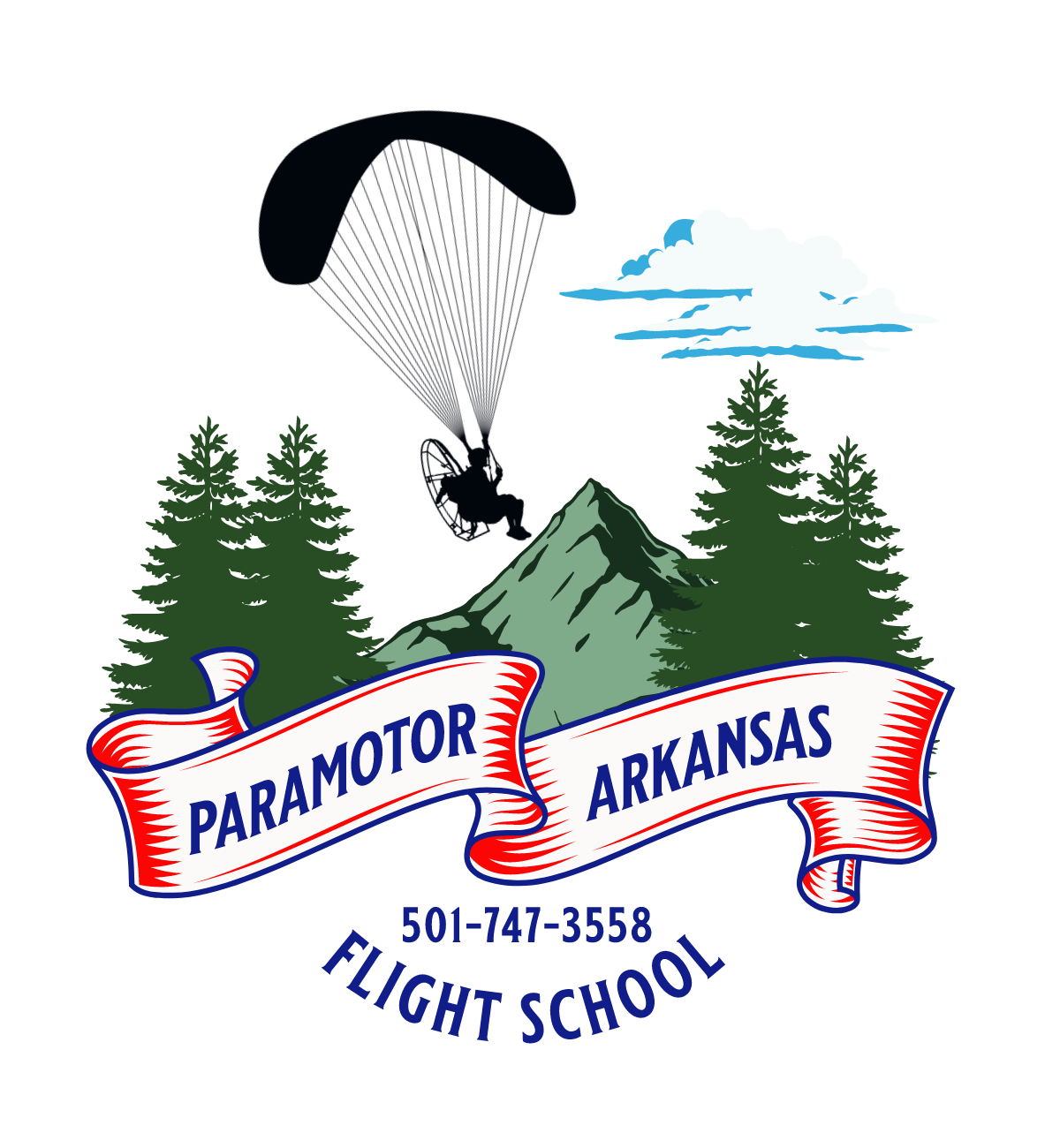Paramotor Terminology III
-
Breaks: Rear of the riser on the paraglider that controls the trailing edge, often used for making turns and adjustments.
-
* Tilt Sensor: A device that senses the angle of the paramotor and provides feedback to the pilot.
-
Airspace Classification: The categorization of airspace based on rules and regulations, such as Class A, B, C, D, etc.
-
Line Overs: A situation where the lines of the paraglider become entangled during deployment.
-
Wingtip Drag: The resistance or drag produced at the tips of the paraglider wing.
-
Wind Gradient: Changes in wind speed and direction with altitude.
-
Canopy Collapse: A sudden reduction in the inflated area of the paraglider wing.
-
Wind Shear: A sudden change in wind speed or direction over a short distance.
-
Ground Effect: The increased lift and reduced drag experienced when flying close to the ground.
-
Emergency Parachute Deployment: The process of activating the reserve parachute in a critical situation.
-
Pitch Stability: The paramotor's tendency to maintain a stable pitch attitude.
-
Propeller Pitch: The angle of the propeller blades, affecting thrust and efficiency.
-
Electric Paramotor: A paramotor powered by an electric motor and batteries.
-
Fly-In: A gathering of paramotor enthusiasts for group flights and social activities.
-
Synchronized Wingovers: A maneuver where multiple paramotors perform coordinated wingovers in the air.
-
Altitude Sickness: Symptoms experienced at high altitudes due to reduced oxygen levels.
-
Line Twist: The tangling of lines during the deployment of the paraglider wing.
-
Touch-and-Go: A maneuver where the paramotor briefly touches the ground before taking off again.
-
Power-On Stall: A stall that occurs while the engine is running and generating thrust.
-
Power-Off Stall: A stall that occurs when the engine is not providing thrust.
-
Dynamic Stability: The paramotor's ability to return to stable flight after a disturbance.
-
Takeoff Roll: The distance covered during the ground run before becoming airborne.
-
* Top-Down Approach: An approach to landing where the pilot descends from above the landing spot.
-
Thermal Lift: Rising air currents caused by temperature differences, often used by pilots for gaining altitude.
-
* Inverted Flight: Flying upside down, an aerobatic maneuver.
-
Negative G-Force: The sensation of gravity pulling in the opposite direction, experienced in maneuvers that push the pilot upward.
-
Positive G-Force: The sensation of gravity pulling in the normal direction, experienced in maneuvers that push the pilot downward.
-
Foot Dragging: A maneuver where the pilot skims the surface with their feet during flight.
-
High-G Turn: A turn with high gravitational force, often associated with aggressive maneuvers.
-
* Power-On Spiral Dive: A controlled, spiraling descent with the engine running.
-
Power-Off Spiral Dive: A controlled, spiraling descent without engine power.
-
Cross-Country Navigation: Navigating over long distances during a flight.
-
Ground Reference Maneuvers: Flight maneuvers performed with reference to ground features.
-
Landing Pattern: A predefined flight path around an airfield for approach and landing.
-
Wind Gradient: Changes in wind speed and direction with altitude.
-
Crosswind Landing: A landing where the wind is blowing across the runway.
-
Headwind Landing: A landing where the wind is coming from the front.
-
* Tailwind Landing: A landing where the wind is coming from behind.
-
Spot Landing Contest: A competition where pilots attempt to land on a specific target.
-
Ground Spotter: An individual on the ground assisting the pilot during takeoff or landing.
-
Altimeter Setting: The current atmospheric pressure setting on the altimeter.
-
Magnetic Variation: The difference between true north and magnetic north.
-
Ground Track: The actual path over the ground traveled by the paramotor.
-
Dead Reckoning: Navigation by calculating one's current position based on a previously known position.
-
True Airspeed: The speed of the paramotor through the air corrected for altitude and temperature.
-
Wind Correction Angle: The angle by which the pilot must adjust their heading to compensate for crosswind. Crabbing
-
Elevation: The height of a location above a reference point, usually sea level.
-
Visual Flight Rules (VFR): Rules and regulations for flying based on visual references.
-
* * Instrument Flight Rules (IFR): Rules and regulations for flying relying on instruments for navigation.
-
Controlled Airspace: Airspace where air traffic control services are provided.
* Advanced do not try unless under an Instructors supervision
* * not used under FAR 103
